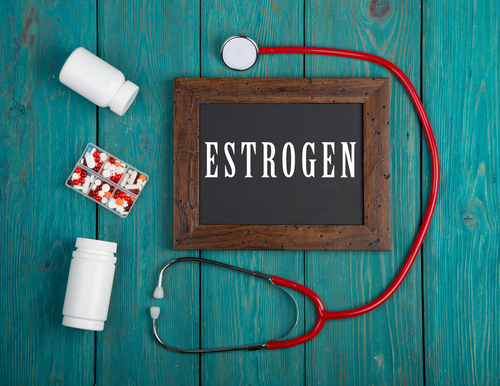Estrogen Exposure May Protect Women from Sjögren’s Syndrome, Study Suggests
Written by |

The female sex hormone estrogen appears to protect women from primary Sjögren’s syndrome, a finding that provides new insights into the development of this condition.
Specifically, the case-control study demonstrated that women with Sjögren’s syndrome have a lower estrogen exposure in their lifetime compared to sicca women (those with dryness in the eyes and mouth, but not the other symptoms of Sjögren’s), and that increasing estrogen exposure lowered their risk of having the condition.
The study, “Sjögren’s Syndrome is Associated With Reduced Lifetime Sex Hormone Exposure: A Case-Control Study,” was published in the journal Arthritis Care & Research.
Sjögren’s syndrome is a chronic autoimmune disease characterized by an abnormal infiltration and accumulation of immune cells inside certain glands, leading to tissue inflammation and eventually irreparable damage. As a result, those affected by the condition usually experience extreme dryness in the eyes and mouth.
The condition is more common among women and often manifests around the time of menopause, when sex hormones decrease drastically, which has given rise to the hypothesis that female hormones may contribute to its development.
To answer this question, researchers at the University of Wisconsin and Johns Hopkins University examined data from women included in the Sjögren’s International Collaborative Clinical Alliance (SICCA) registry, a database for people with suspected or diagnosed Sjögren’s syndrome.
Their ultimate goal was to evaluate the prevalence of Sjögren’s syndrome and its association with reproductive and menstrual factors in these women.
The study included 2,680 women, including 1,320 patients with primary Sjögren’s syndrome and 1,360 with sicca (dryness symptoms not associated with Sjögren’s syndrome).
In general, Sjögren’s patients had lower cumulative estrogen exposure and had fewer menstrual cycles than participants used as controls.
Researchers then devised a way to score cumulative estrogen exposure during a woman’s lifetime. Their composite estrogen score (CES) assigned one point to each of these factors: early first menstruation (before age 10), high number of pregnancies (more than three), uterus removal, use of hormone therapy, and late menopause (age 53 or later).
These scores showed a progressive effect; women with higher CES showed a lower risk for primary Sjögren’s syndrome.
Also, women with Sjögren’s syndrome were less likely to have undergone surgery to remove their uterus, and to be older at first menopause. Also, fewer Sjögren’s patients were taking female hormones.
No clear association was found for other individual components of menstrual and reproductive history, including pregnancies, miscarriages, and menopause.
Overall, these findings suggest that “greater reproductive hormone exposure prior to clinical onset of disease might protect against the development of pSS [primary Sjögren’s syndrome],” providing new insights “into potential novel mechanisms” involved in this disease.
“Further longitudinal studies of sex hormone exposure in pSS are needed to confirm these findings,” the researchers concluded.





